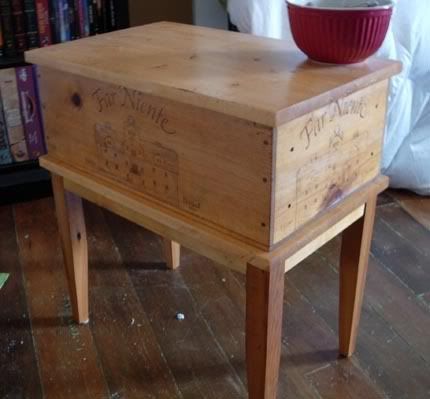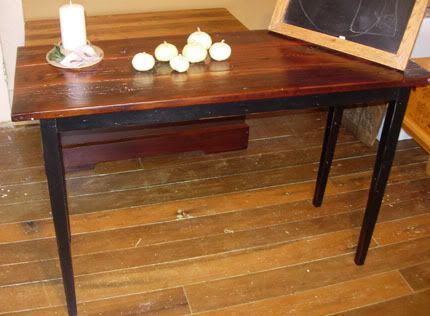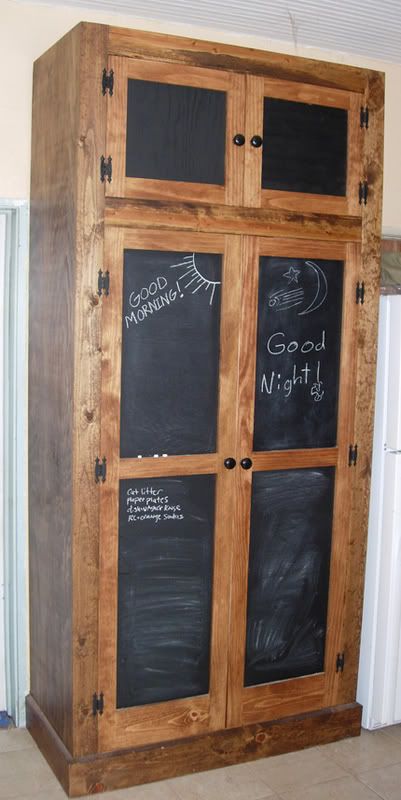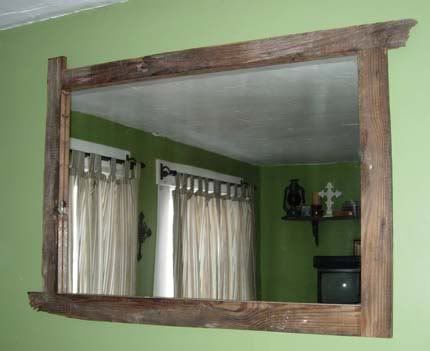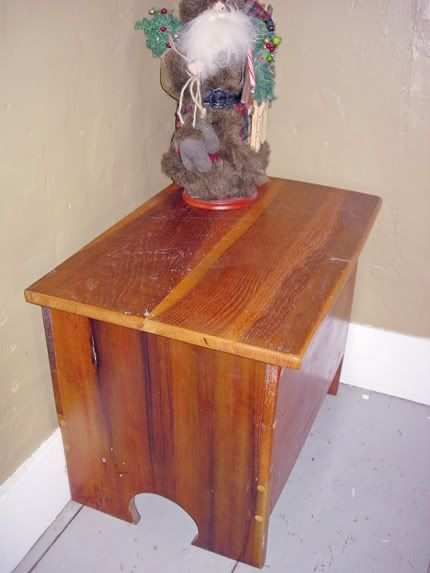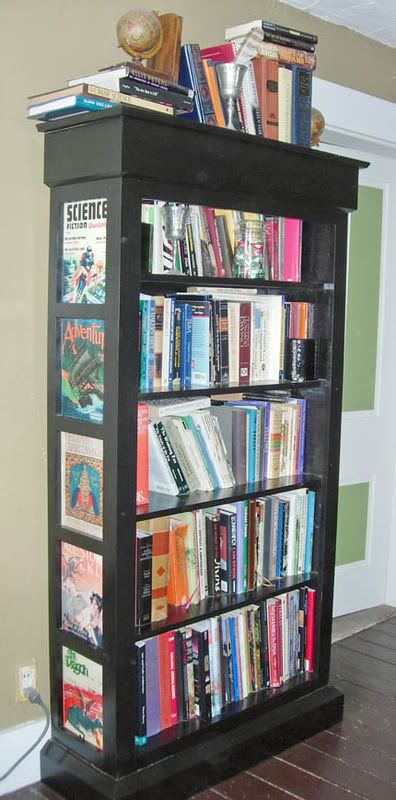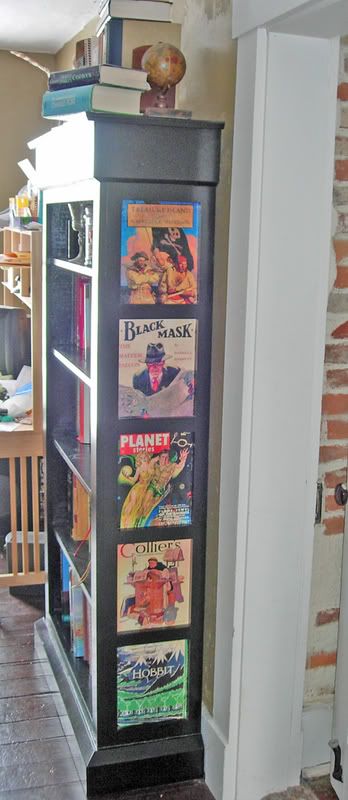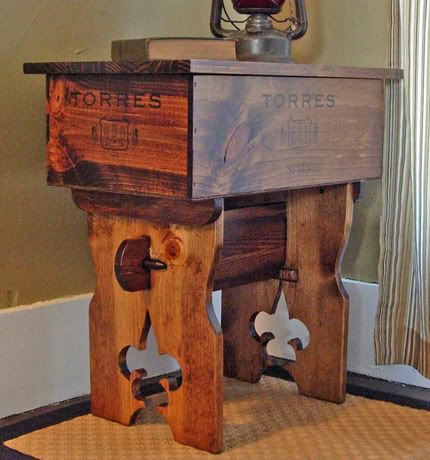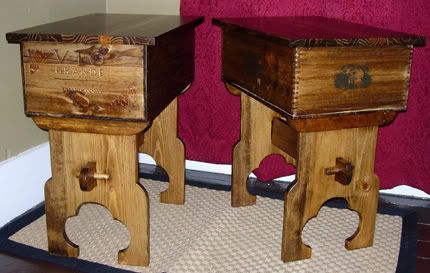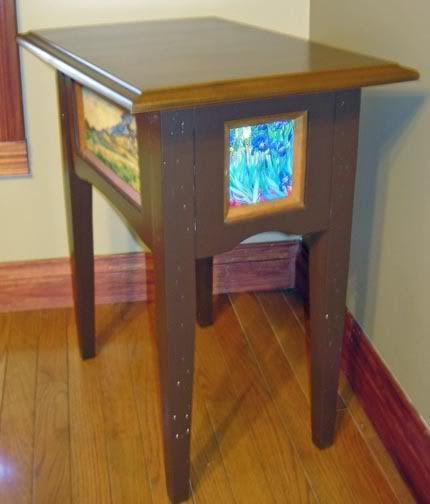 This is a little end table that was fun to build, or at least interesting, which is the same thing to me. I learned a few things that will be applied to future builds and I think I'd like to use this same general idea on a lot of other projects. A library table comes to mind. Maybe one with scenes from famous books inset in the apron wrapping around the underside.
This is a little end table that was fun to build, or at least interesting, which is the same thing to me. I learned a few things that will be applied to future builds and I think I'd like to use this same general idea on a lot of other projects. A library table comes to mind. Maybe one with scenes from famous books inset in the apron wrapping around the underside.The top of this table is actually a sample raised panel that my mom picked up at a yard sale. It's beech, a tight grained wood that is often used as a substitute for cherry.
 The picture frame aprons are pine, just stock 1x2 material. I picked it out for it's straight grain and clean look. The images themselves are all paintings by Van Gogh, clipped to size in photoshop, and printed on heat transfer sheets. The sheets are then ironed on to 1/4 inch plywood backs that are inset in the backs of the frame aprons like a picture would be. I ran a chamfered edge moulding around the inside of the frames and stained it to bring out a contrast with the paintings. I had to make the moulding since I didn't have anything on hand that would fit, that was tedious.
The picture frame aprons are pine, just stock 1x2 material. I picked it out for it's straight grain and clean look. The images themselves are all paintings by Van Gogh, clipped to size in photoshop, and printed on heat transfer sheets. The sheets are then ironed on to 1/4 inch plywood backs that are inset in the backs of the frame aprons like a picture would be. I ran a chamfered edge moulding around the inside of the frames and stained it to bring out a contrast with the paintings. I had to make the moulding since I didn't have anything on hand that would fit, that was tedious.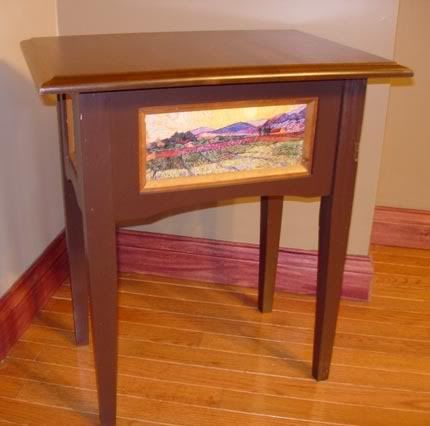 The legs are pencil posts with a sharper inner angle. They are again reclaimed fir 2x4s with many nail holes and chips. The top is stained, but I painted the legs and aprons with a dark brown called "expresso". It's a great color, but I won't use that company's paint again because it was a terrible pain to get spread on evenly. It took four coats before I was satisfied.
The legs are pencil posts with a sharper inner angle. They are again reclaimed fir 2x4s with many nail holes and chips. The top is stained, but I painted the legs and aprons with a dark brown called "expresso". It's a great color, but I won't use that company's paint again because it was a terrible pain to get spread on evenly. It took four coats before I was satisfied.The legs bolt on and come off easily. This time I used wing nuts, so no wrench is needed.
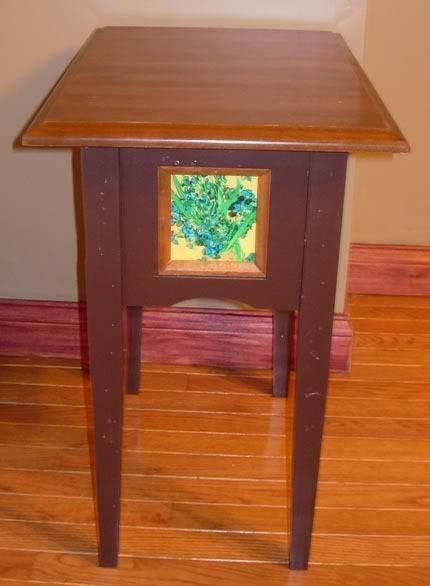 I've come to really like Van Gogh. I didn't care for expressionism when I was younger. Everything is expressionist in the morning before you find your glasses, and I couldn't see what was all that great about that. I have nice scans of some of his lesser known works now, and I'd like to use them in something. I just don't know if my wife will like the skeleton smoking a cigarette, or the earless self portrait.
I've come to really like Van Gogh. I didn't care for expressionism when I was younger. Everything is expressionist in the morning before you find your glasses, and I couldn't see what was all that great about that. I have nice scans of some of his lesser known works now, and I'd like to use them in something. I just don't know if my wife will like the skeleton smoking a cigarette, or the earless self portrait.
 I've come to really like Van Gogh. I didn't care for expressionism when I was younger. Everything is expressionist in the morning before you find your glasses, and I couldn't see what was all that great about that. I have nice scans of some of his lesser known works now, and I'd like to use them in something. I just don't know if my wife will like the skeleton smoking a cigarette, or the earless self portrait.
I've come to really like Van Gogh. I didn't care for expressionism when I was younger. Everything is expressionist in the morning before you find your glasses, and I couldn't see what was all that great about that. I have nice scans of some of his lesser known works now, and I'd like to use them in something. I just don't know if my wife will like the skeleton smoking a cigarette, or the earless self portrait.